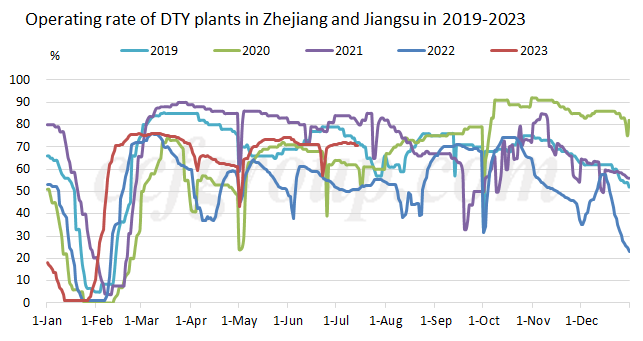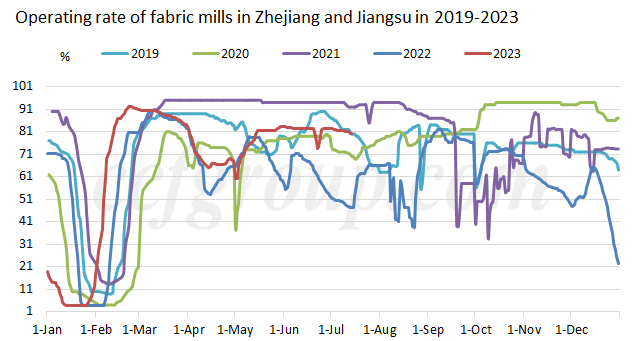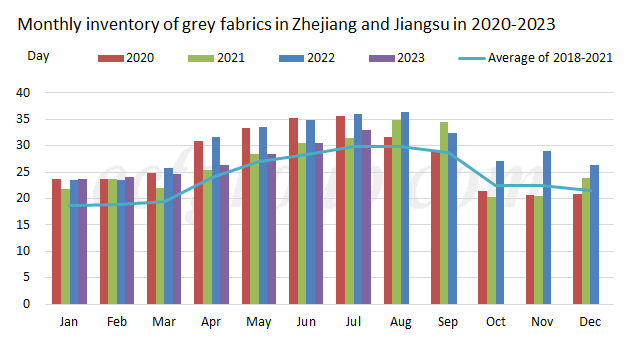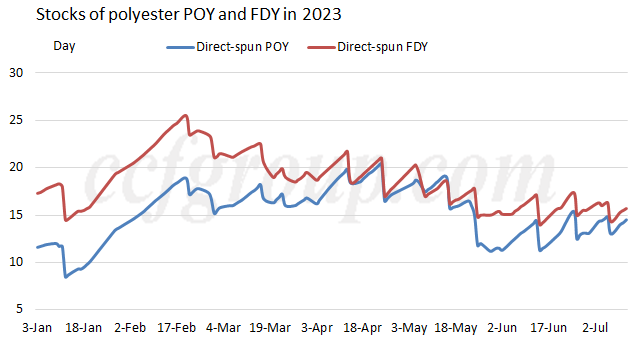Operating rate of downstream factories to descend impacted by hot weather and power rationing
From last week to this week, with the continuous high temperature in Jiangsu and Zhejiang, the sensitivity and attention of the market to the news of power rationing are increasing.
Currently, the documented document in the market is the "Notice on Carrying out Peak Shifting and Valley Filling Work of Electric Power to Meet the Peak and Spend the Summer" issued by the Department of Economy and Information Technology of Zhejiang Province, the Development and Reform Commission of Zhejiang Province, and Zhejiang Electric Power Company". In smaller areas, such as Shaoxing, Taicang, and Changxing, major fabric manufacturing and DTY production bases in Jiangsu and Zhejiang have issued some pre-plans. By asking downstream fabric mills and DTY producers, it is learned that there is currently limited production curtailment or suspension due to power cuts.
By Jul 13, the operating rate of downstream plants decreased by 1-2 percentage points on the week in Zhejiang and Jiangsu. Operating rate of DTY plants fell to 80% in Zhejiang and Jiangsu: around 80-90% in Xiaoshan and Shaoxing and Changxing, below 80% in Taicang and Cixi and at 70-80% in Changshu.Operating rate of fabric mills dropped to 71% in Zhejiang and Jiangsu: around 80% for water-jet mills in Wujiang, near 80-90% in Changxing, around 70-80% in North Jiangsu; the run rate of warp knitting plants was around 90% in Haining and near 50% in Changshu; the operating rate of circular knitting plants was at 40-50% in Xiaoshan, Shaoxing and Changshu.Operating rate of dyeing plants decreased to 73% in Zhejiang and Jiangsu: near 80% in Wujiang, above 60% in Xiaoshan and Shaoxing, around 60% in Changshu, around 90% in Haining, near 80% Changxing and near 80-90% in North Jiangsu.
Current operating rate is still higher than the historic average. In 2018-2022, the average operating rate of DTY plants and fabric mills was at 74% and 67% respectively in Zhejiang and Jiangsu.


As the power rationing has not started in full swing for the time being, it does not exert big effect on the operating rate of DTY plants, fabric mills and printing and dyeing plants and the consumption of PFY temporarily. As for later trend, the disturbance from hot weather and power rationing may continue escalating, especially when the hot weather comes early this year. In addition, with hot weather, deteriorating production environment, high inventory burden of grey fabric, rising PFY prices but hard-to-rise grey fabric price and low-priced PFY inventory in downstream plants, if the cost pressure keeps increasing later, some factories may cut run rate.

Looking at the historical impact of power cuts on downstream operating rate, it seems that Jul is a bit early this year. The main impact in 2021 occurred in Sep and Oct, while in 2022, the main impact was in Aug. After the power cuts in 2021, the operating rates in Sep and Oct continued to decline, with their average values lower than that of Aug. The run rate of DTY plants and fabric mills experienced a decrease of 28% and 11% respectively. The impact on DTY market was greater than that on fabric manufacturing market, and there was a temporary tightness in the DTY market supply. In 2022, there wasn't much change in the operating rate between Aug and Jul, which was mainly because the downstream operating rate was already relatively low during the off-season season of Jun and Jul.

The influence of power rationing on the operating rate of downstream plants is still not clear for the time being. However, PFY plants may face increasing pressure in terms of demand later. Stocks of PFY may accumulate in Jul but current inventory is not high. It is still early for PFY companies to take the initiative to reduce operating rate. In addition, considering into the coming Asian Games in Hangzhou, Zhejiang, PFY plants are still expected to keep running at high capacity temporarily. Whether the power rationing will have direct requirements on the PFY factories should be concerned.

- Top keywords
- Cotton Price
- Cotton Futures Price
- Cotton Futures
- CZCE
- PTA Futures Price
- Chemical Fiber
- Polyester Prices
- Wool price
- PTA Futures
- Shengze Silk
- China
- Yarn Price
- price
- China Textile City
- Fibre Price
- Benzene Price
- Cotton
- Index
- Cotton Index
- PTA
- fabric price
- NYMEX
- Top 10
- textile industry
- Spot Cotton
- Cotton Yarn
- Polyester Price
- Futures
- PTA Price
- cotton yarn price

